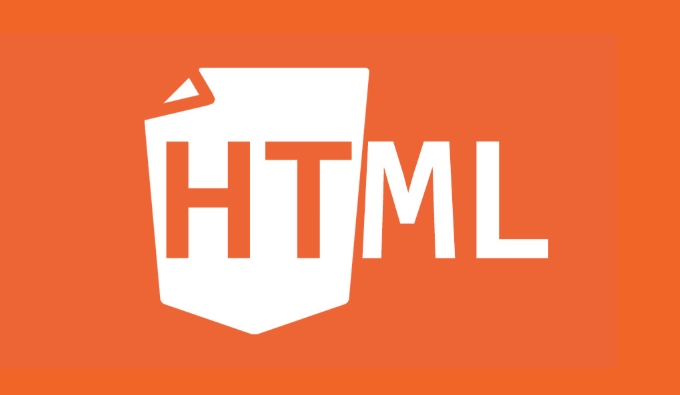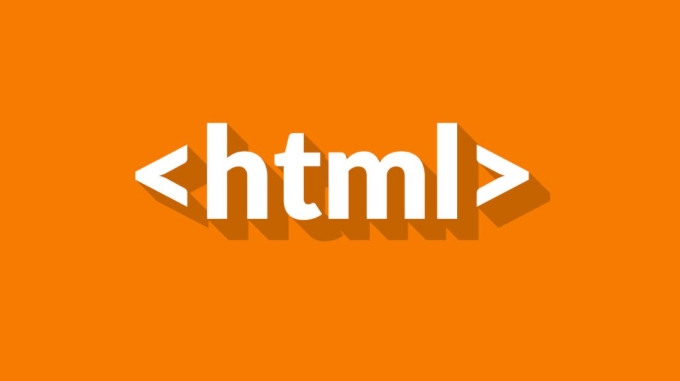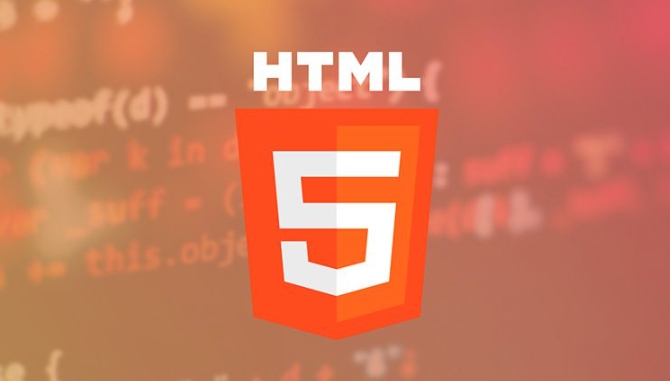To learn HTML in 2025, choose a tutorial that balances hands-on practice with modern standards and integrates CSS and JavaScript basics. 1. Prioritize hands-on learning with step-by-step projects like building a personal profile or blog layout. 2. Ensure it covers modern HTML elements such as

If you're looking to learn HTML in 2025, the best approach is to find a tutorial that’s beginner-friendly, up-to-date, and teaches practical skills. The internet is full of resources, but not all are created equal. Here's how to find the right one and what to look for.

Look for Hands-On Learning
One of the most effective ways to learn HTML is by doing. Avoid tutorials that just show code without giving you a chance to write it yourself. A good resource will walk you through building simple web pages from scratch — like creating a personal profile or a basic blog layout.

Here’s what to expect from a solid hands-on HTML tutorial:
- Step-by-step instructions with real examples
- Exercises that challenge you to apply what you’ve learned
- Code snippets you can copy, tweak, and test immediately
This kind of learning helps you understand how HTML elements work together rather than just memorizing tags.

Make Sure It Covers Modern HTML Basics
HTML hasn’t changed drastically over the years, but there are new semantic tags and best practices that make your code cleaner and more accessible. A quality 2025 tutorial should include:
- Semantic elements like
<header></header>,<main></main>,<section></section>, and<footer></footer> - Accessibility basics, such as using proper heading structure and alt text
- How to embed modern media (like SVGs or responsive images)
Don’t settle for outdated content that still uses <div> for everything. You want to learn the way professionals structure websites today.<hr>
<h3 id="Choose-a-Tutorial-That-Integrates-With-CSS-and-JS-Basics">Choose a Tutorial That Integrates With CSS and JS Basics</h3>
<p>HTML doesn’t work in isolation — it’s the foundation, but you’ll eventually need to style and add interactivity. The best beginner HTML tutorials introduce basic CSS and JavaScript concepts alongside HTML, so you see how they connect.</p>
<p>Look for lessons that teach:</p>
<ul>
<li>Inline vs internal vs external CSS</li>
<li>Adding scripts with <code><script></script> tags
This gives you a clearer picture of how web development actually works in real projects.
Free Options Are Totally Viable
You don’t have to pay for a course to get a great HTML education. Some of the top free resources in 2025 include:
These platforms offer structured paths, interactive coding environments, and clear explanations. Just make sure to check the last update date to ensure the material reflects current standards.
Don’t Skip Practice Projects
The real test of a good tutorial is whether it pushes you to build something on your own. After learning the basics, try making a simple website — maybe a portfolio or a todo list. This helps reinforce what you’ve learned and builds confidence.
Some tutorials even provide templates or starter files to guide your first project. That little bit of structure can make a big difference when you’re just starting out.
Basically, the best HTML tutorial for beginners in 2025 is one that balances theory with practice, stays modern, and keeps things simple enough to follow along without getting lost. Find one that fits these criteria, and you’ll be writing clean, functional HTML in no time.
The above is the detailed content of Best HTML tutorial for beginners in 2025. For more information, please follow other related articles on the PHP Chinese website!

Hot AI Tools

Undress AI Tool
Undress images for free

Undresser.AI Undress
AI-powered app for creating realistic nude photos

AI Clothes Remover
Online AI tool for removing clothes from photos.

Clothoff.io
AI clothes remover

Video Face Swap
Swap faces in any video effortlessly with our completely free AI face swap tool!

Hot Article

Hot Tools

Notepad++7.3.1
Easy-to-use and free code editor

SublimeText3 Chinese version
Chinese version, very easy to use

Zend Studio 13.0.1
Powerful PHP integrated development environment

Dreamweaver CS6
Visual web development tools

SublimeText3 Mac version
God-level code editing software (SublimeText3)

Hot Topics
 Explain the purpose of the role attribute in ARIA.
Jun 14, 2025 am 12:35 AM
Explain the purpose of the role attribute in ARIA.
Jun 14, 2025 am 12:35 AM
ARIA's role attribute is used to define the role of web elements and improve accessibility. 1. Role attribute helps assistive technology to understand the functions of elements, such as buttons, navigation, etc. 2. Use role attributes to assign specific roles to non-semantic HTML elements. 3. The role attribute should be consistent with the element behavior and be verified by the accessibility tool test.
 HTML and Design: Creating the Visual Layout of Websites
Jun 14, 2025 am 12:39 AM
HTML and Design: Creating the Visual Layout of Websites
Jun 14, 2025 am 12:39 AM
How to create a website layout? 1. Use HTML tags to define the content structure, such as, ,. 2. Control styles and positions through CSS, using box model, float or Flexbox layout. 3. Optimize performance, reduce HTTP requests, use cache and optimize images, and ensure responsive design.
 How can you ensure your HTML code is readable and maintainable?
Jun 10, 2025 am 12:06 AM
How can you ensure your HTML code is readable and maintainable?
Jun 10, 2025 am 12:06 AM
Improve the readability and maintainability of HTML code can be achieved through the following steps: 1. Use semantic tags, such as, etc. to make the code structure clear and improve SEO effect; 2. Keep the code formatted and use consistent indentation and spaces; 3. Add appropriate comments to explain the code intention; 4. Avoid excessive nesting and simplify the structure; 5. Use external style sheets and scripts to keep the HTML concise.
 How do I stay up-to-date with the latest HTML standards and best practices?
Jun 20, 2025 am 08:33 AM
How do I stay up-to-date with the latest HTML standards and best practices?
Jun 20, 2025 am 08:33 AM
The key to keep up with HTML standards and best practices is to do it intentionally rather than follow it blindly. First, follow the summary or update logs of official sources such as WHATWG and W3C, understand new tags (such as) and attributes, and use them as references to solve difficult problems; second, subscribe to trusted web development newsletters and blogs, spend 10-15 minutes a week to browse updates, focus on actual use cases rather than just collecting articles; second, use developer tools and linters such as HTMLHint to optimize the code structure through instant feedback; finally, interact with the developer community, share experiences and learn other people's practical skills, so as to continuously improve HTML skills.
 How do I use the element to represent the main content of a document?
Jun 19, 2025 pm 11:09 PM
How do I use the element to represent the main content of a document?
Jun 19, 2025 pm 11:09 PM
The reason for using tags is to improve the semantic structure and accessibility of web pages, make it easier for screen readers and search engines to understand page content, and allow users to quickly jump to core content. Here are the key points: 1. Each page should contain only one element; 2. It should not include content that is repeated across pages (such as sidebars or footers); 3. It can be used in conjunction with ARIA properties to enhance accessibility. Usually located after and before, it is used to wrap unique page content, such as articles, forms or product details, and should be avoided in, or in; to improve accessibility, aria-labeledby or aria-label can be used to clearly identify parts.
 How do I create a basic HTML document?
Jun 19, 2025 pm 11:01 PM
How do I create a basic HTML document?
Jun 19, 2025 pm 11:01 PM
To create a basic HTML document, you first need to understand its basic structure and write code in a standard format. 1. Use the declaration document type at the beginning; 2. Use the tag to wrap the entire content; 3. Include and two main parts in it, which are used to store metadata such as titles, style sheet links, etc., and include user-visible content such as titles, paragraphs, pictures and links; 4. Save the file in .html format and open the viewing effect in the browser; 5. Then you can gradually add more elements to enrich the page content. Follow these steps to quickly build a basic web page.
 What is an HTML tag?
Jun 13, 2025 am 12:36 AM
What is an HTML tag?
Jun 13, 2025 am 12:36 AM
HTMLtagsareessentialforstructuringwebpages.Theydefinecontentandlayoutusinganglebrackets,ofteninpairslikeand,withsomebeingself-closinglike.HTMLtagsarecrucialforcreatingstructured,accessible,andSEO-friendlywebpages.
 How do I create checkboxes in HTML using the element?
Jun 19, 2025 pm 11:41 PM
How do I create checkboxes in HTML using the element?
Jun 19, 2025 pm 11:41 PM
To create an HTML checkbox, use the type attribute to set the element of the checkbox. 1. The basic structure includes id, name and label tags to ensure that clicking text can switch options; 2. Multiple related check boxes should use the same name but different values, and wrap them with fieldset to improve accessibility; 3. Hide native controls when customizing styles and use CSS to design alternative elements while maintaining the complete functions; 4. Ensure availability, pair labels, support keyboard navigation, and avoid relying on only visual prompts. The above steps can help developers correctly implement checkbox components that have both functional and aesthetics.






